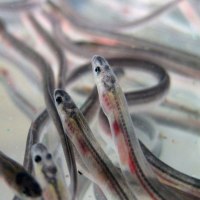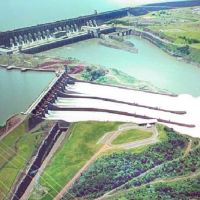Meet the BioFresh team: Will Darwall
We continue our ‘meet the team’ series, a behind the scenes look into the work of BioFresh, with an interview with Will Darwall, Head of the IUCN Freshwater Biodiversity Unit.
Will has over 20 years experience working on and leading collaborative research projects on the ecology and conservation of aquatic ecosystems in developing countries. We will also be posting a video discussion with Will this week, who outlines some of the key challenges for freshwater biodiversity, to promote the International Day of Biodiversity’s theme ‘Water and Biodiversity’.

Will Darwall (front) on a biodiversity survey on the Mekong – a river where the fish are only really seen by fishermen as the waters are so turbid.
1 What is the focus of your work for BioFresh, and why?
The world’s inland waters are probably the most threatened of our ecosystems, with the best current estimates suggesting around 50% have already been lost over the last 100 years. Loss of habitat clearly also leads to a loss of species and indications from the IUCN Red List put freshwater species as some of the most threatened of all. Given this situation our focus in BioFresh is to improve and make freely available the information needed to guide policy decisions and on-the-ground conservation action to help halt the loss of freshwater biodiversity through effective conservation and development planning. One of the most powerful tools we are developing through the project is the identification and mapping of a network of Key Biodiversity Areas for freshwater species. Key Biodiversity Areas basically represent those areas we need to protect if we are to prevent the loss of species.
2 How is your work relevant to policy makers, conservationists and/or the general public?
A number of important Conventions, such as the Convention on Biological Diversity (under Target 11), and policies on environmental safeguards, such as Performance Standard 6 of the International Finance Corporation (guidance to the World Bank Group), specifically state the need to identify and protect important sites of biodiversity. Our work to map these important sites through BioFresh will directly provide the information needed for countries and developers to identify these sites. We are also able to determine how well the current protected area networks, such as Natura2000, incorporate freshwater species and we can identify areas where the coverage is poor and recommend additional or modified protected areas to better represent freshwater species.

Heron eying an alligator in the Forida Everglades
3 Why is the BioFresh project important?
BioFresh is unique in its ability to bring together the widely dispersed information needed to inform policy for the conservation of freshwater biodiversity. The BioFresh portal will allow rapid access to much of the latest information on the status of freshwater biodiversity, the threats to that biodiversity, and predictions for the impacts of those threats on species, especially in relation to movements of species to new areas.
4 Tell us about a memorable experience in your career.
One of my more memorable moments was my first dive in Lake Tanganyika as part of a project where we were to train local scientists in underwater survey methodologies. Diving in the lake was like diving on an inland coral reef with a tremendous diversity of fish species, freshwater jellyfishes, crabs, shells and even the endemic water cobra.

Ophthalmotilapia ventralis, a type of freshwater fish only found in Lake Tanganyika, Tanzania, and member of the cichlid family.
5 What inspired you to become a scientist?
I was probably influenced quite heavily by my uncle who is an entomologist and excellent naturalist. He used to take me out “bug hunting” all the time and I became quite an expert on many species at an early age (since forgotten now I fear!). As part of this experience when looking after some of his “pets” I remember watching Atlas moths emerging in my bedroom and hanging from the curtain, and huge stick insects shooting their eggs off the walls! Later on my interest in freshwaters was possibly initiated when my sister won a goldfish at the fair and we set up our first fish tank.
6 What are your plans and ambitions for your future scientific work?
To inspire more people to be interested in the wonders of freshwater biodiversity – I see communication of the value of freshwater biodiversity as a major challenge. Most people will never see the amazing species we know are living in our lakes and rivers as they remain hidden in often murky waters and their loss often goes unnoticed.














